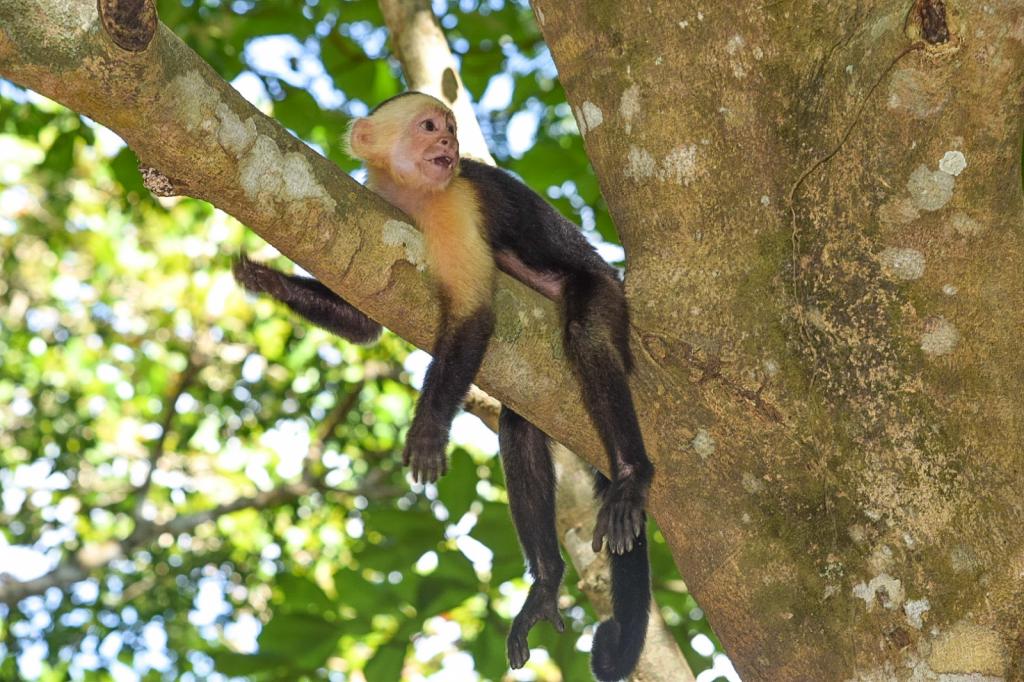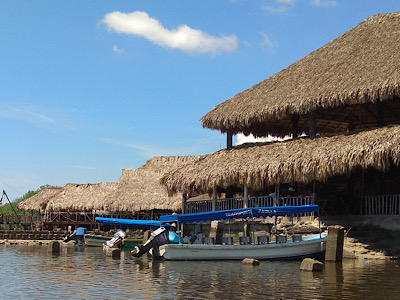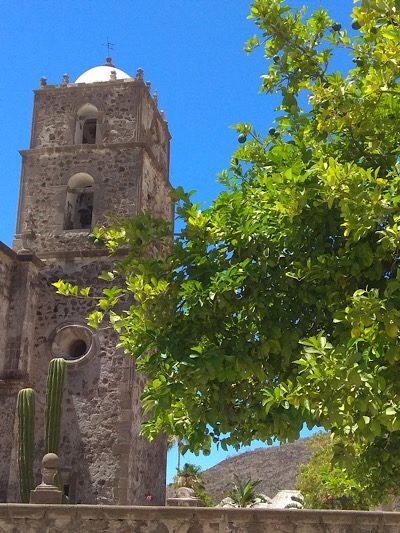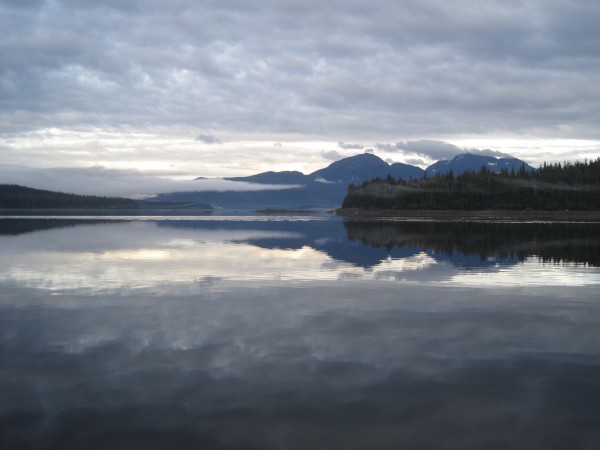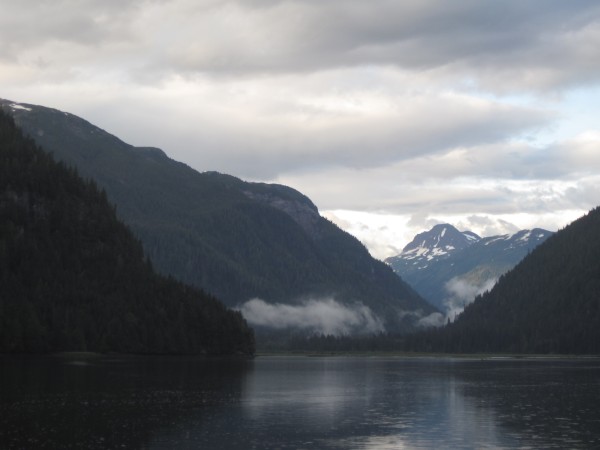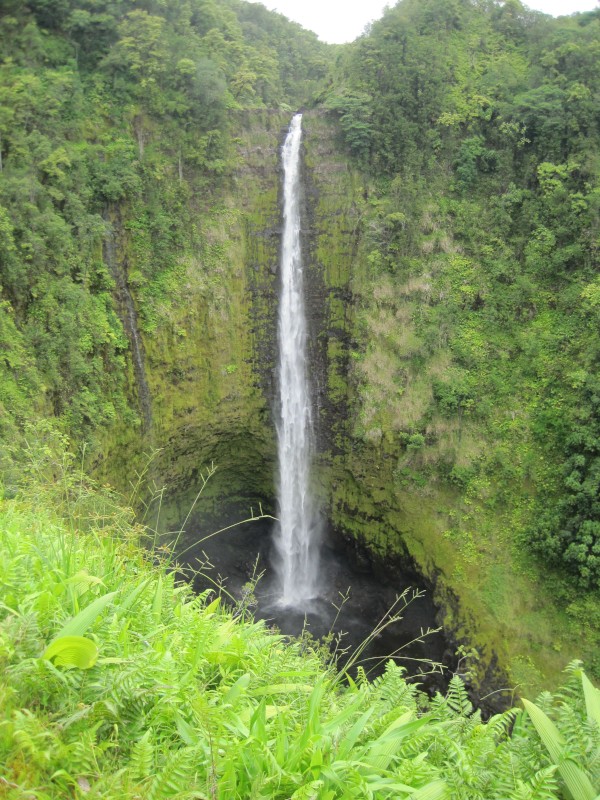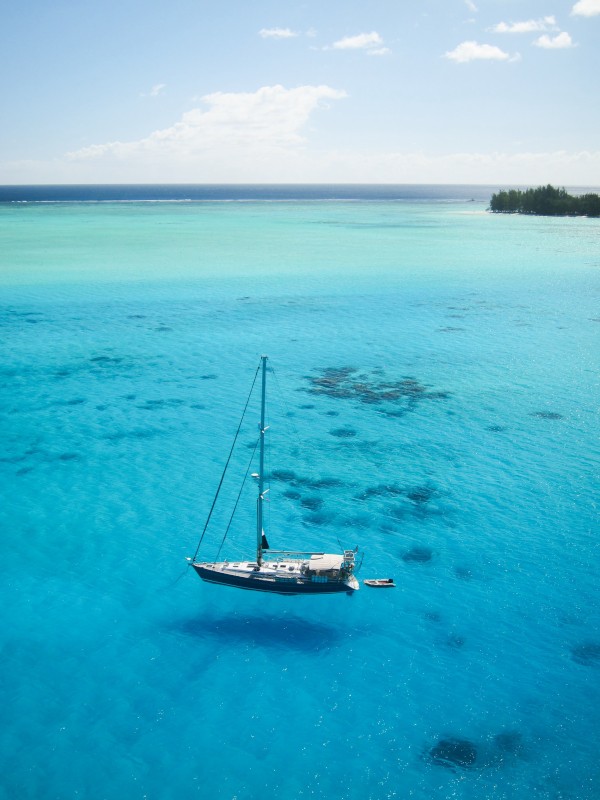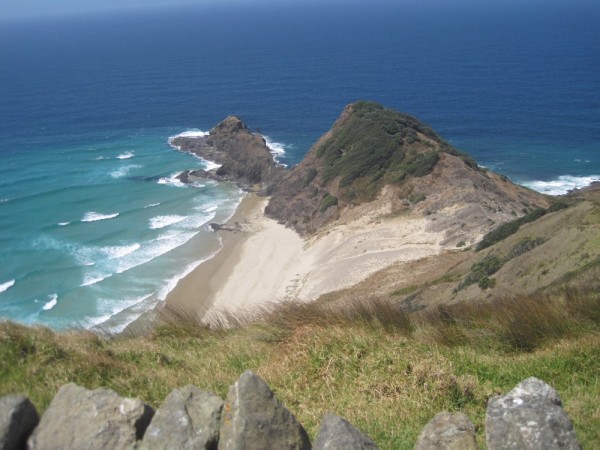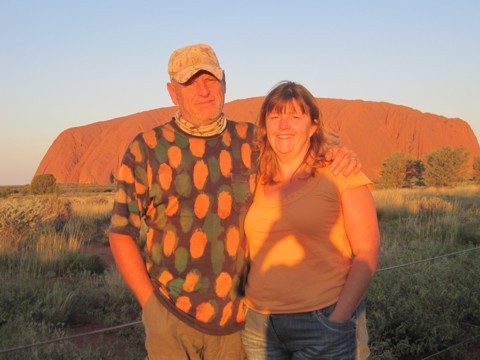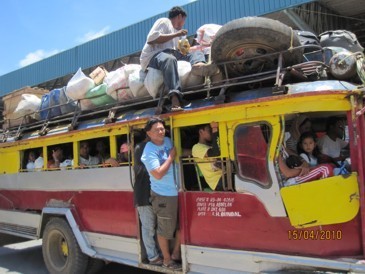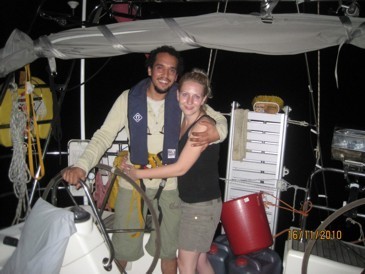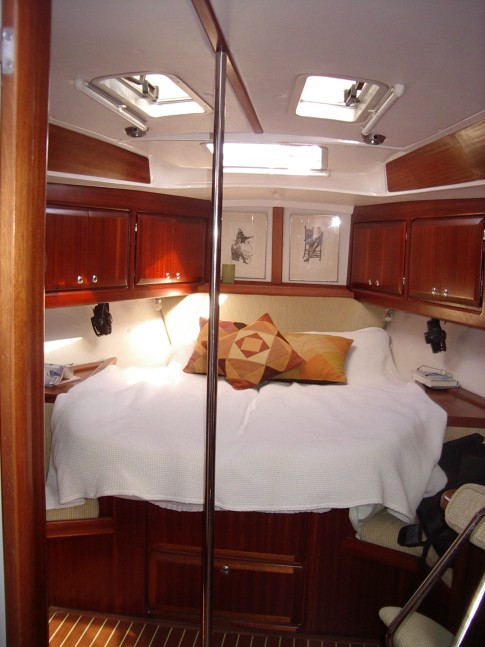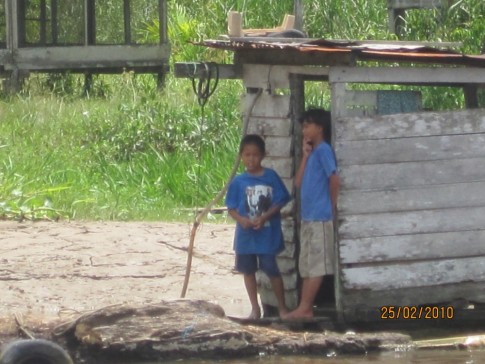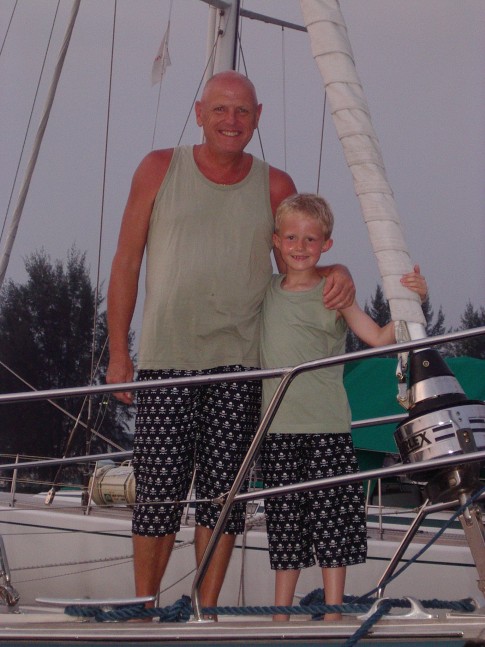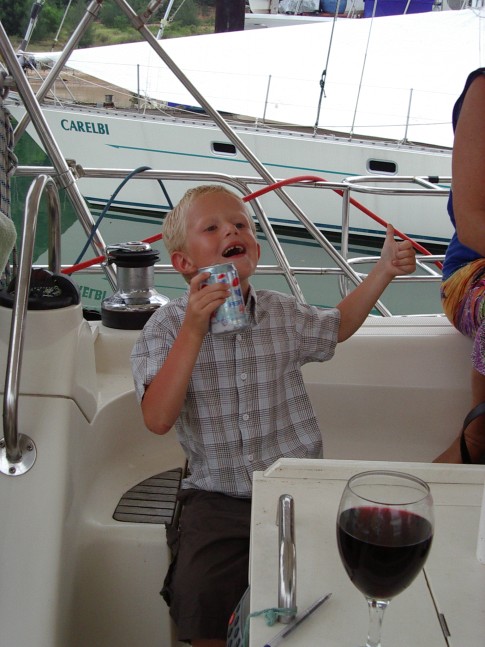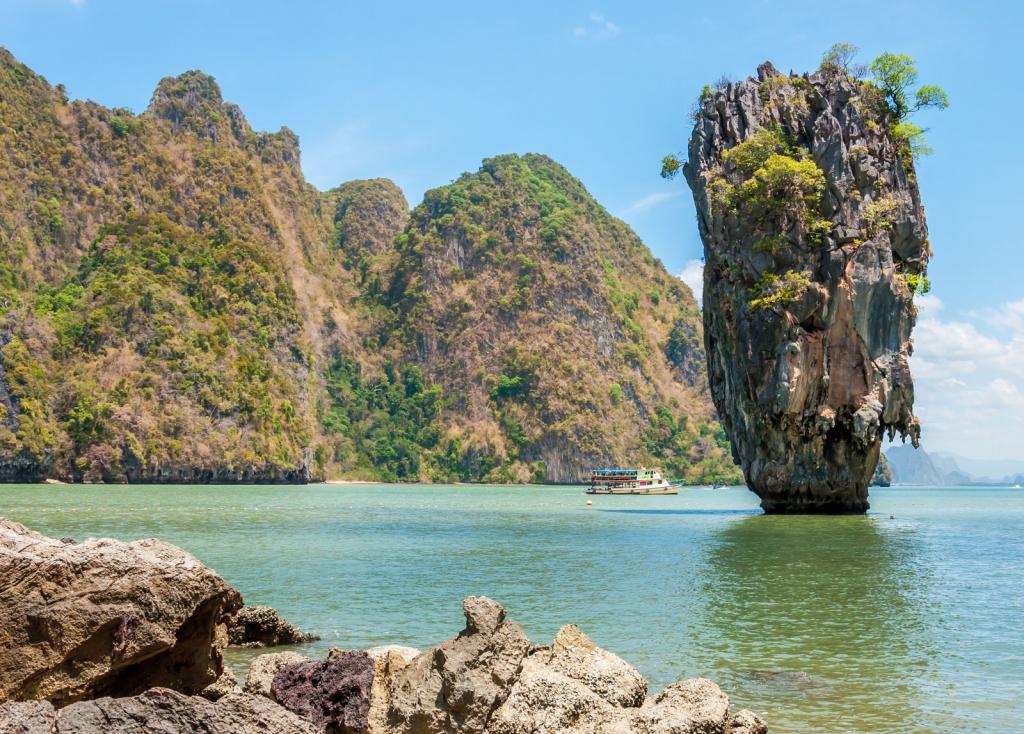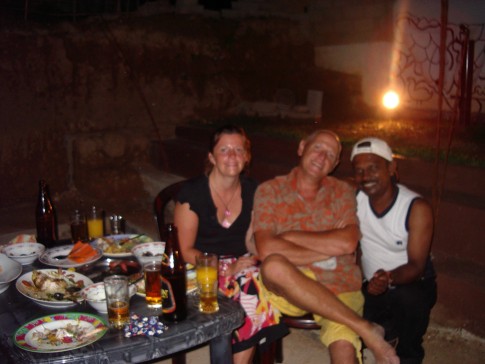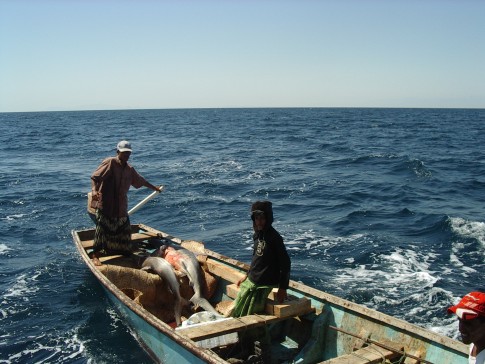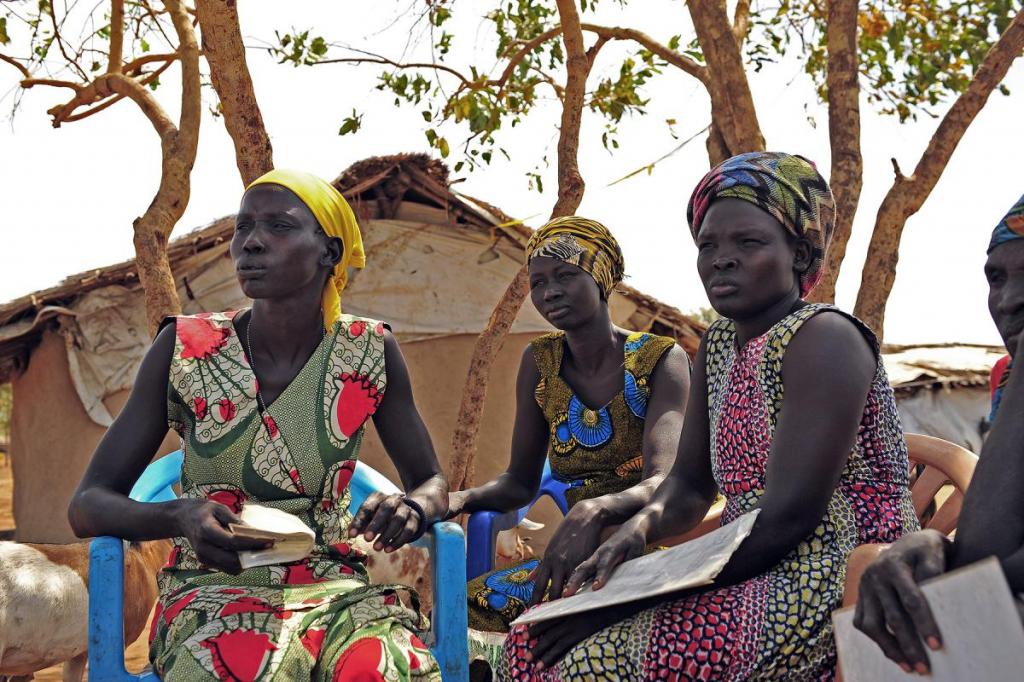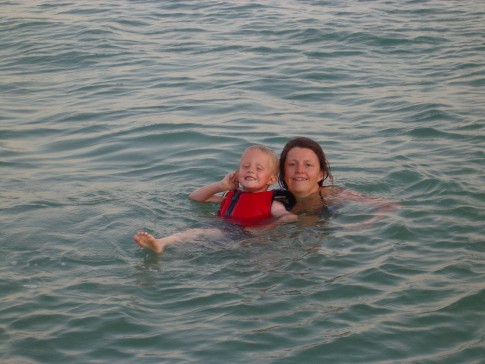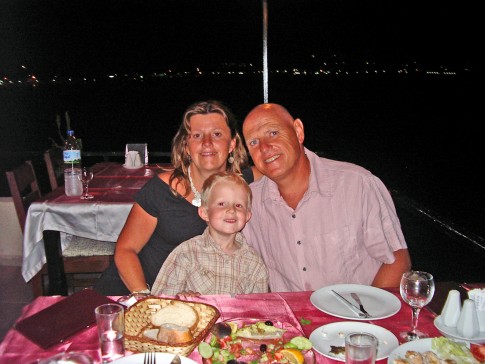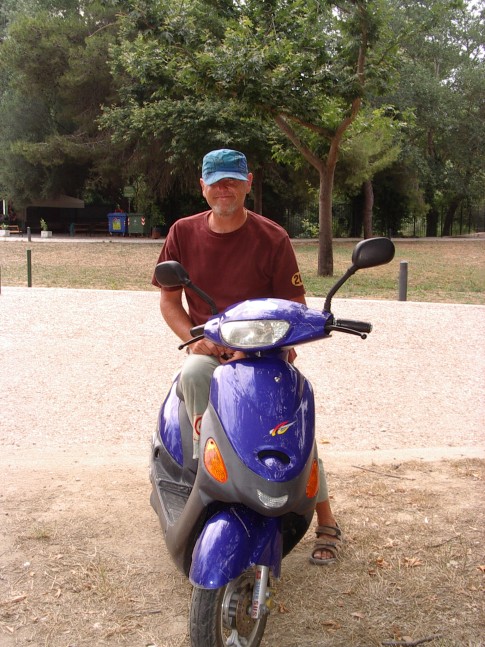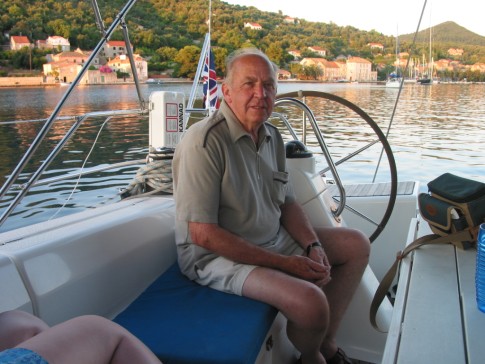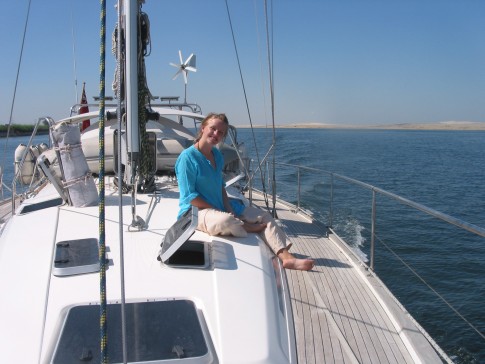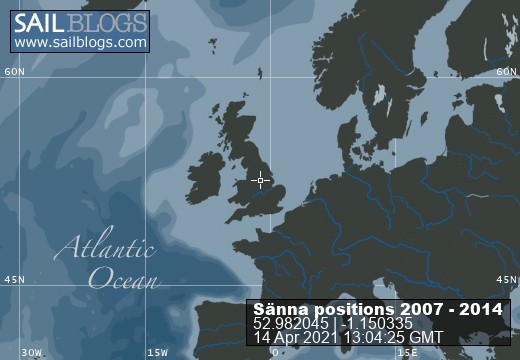
sailing vessel Sänna
Blogs from our sailing vessel Sänna. Eastwards from England to New Zealand... & sailing circumnavigation.
09 May 2023 | Willemstad, Curaçao - Dutch Caribbean.
12 June 2022 | Sherwood, Nottingham
30 March 2022 | Cartagena, Colombia
03 March 2022 | Shelter Bay, Panama
14 December 2021 | Shelter Bay - Caribbean Panama
20 November 2021 | Vista Mar, San Carlos, Panama
11 September 2021 | Nottingham, England
11 August 2021 | No Location
25 June 2021 | England
30 April 2021 | Lockdown in England
27 April 2021 | England
14 April 2021 | Lockdown - Nottingham, England
31 March 2021 | Winterton-on-Sea, Norfolk, England
09 March 2021 | Vista Mar, Panama
17 February 2021 | Sherwood, Nottingham, England
07 February 2021 | Sherwood, England
28 January 2021 | In national lockdown, Nottingham, England
28 December 2020 | Nottingham, England
20 October 2020 | Vista Mar, Panama
23 April 2020 | Vista Mar, Panama
The Simple Art of Catching a Fish
26 October 2014 | Hoonah, Alaska
Dave
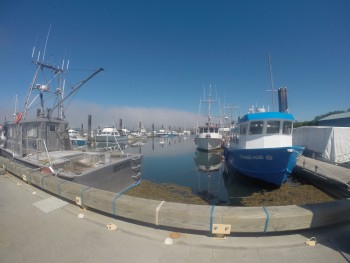
Photo: Fishing Fleets of British Columbia
Did you know a female Pink Salmon lays between 1,200 and 1,900 eggs? They incubate over winter for five to eight months and hatch early spring. The little baby pink salmon migrate to the deep ocean as soon as they emerge, feed for eighteen months, then return to the exact same creek to spawn and die at two years of age.
If we think about this a little more then we get to a thought provoking calculation. Perhaps you're not much interested in what I'm about to tell you but please try and stay with me for just a short while. I'm going to explain the simple art of catching a fish...
There were, according to official estimates, 179 million salmon caught in Alaskan waters in 2013, a near 30% increase over 2012 of 127 million fish. Add to this the estimated catch in British Columbia of 122 million salmon then you can see we are talking a lot of salmon. Fisheries experts claim that approximately 40% of the total numbers of salmon are ever caught, thus allowing a round number estimate of 500 million fish that are forever free... essential, I might add, for the future of salmon. That's half a billion in my reckoning, winging their way eastwards thru the Pacific ocean June to September in this current year. These are the happy fish, they get to find their little river or creek where they were spawned. And if we say, through the principles of logic, 50% of these are female fish then we can safely suggest the rest, 250 million, are frisky males each with an expectant glint in their eye.
Let's, for arguments sake, say other predators as well as ourselves feast on this glutton of John Wests' prime Pink, Sockeye, Cohort and King salmon. By this I mean grizzly bears, black bears, bald eagles, other numerous sea birds, some species of whales and many others I can't even think of right now. Of course, there are no reliable figures for subsistence consumption by species other than man (and women, my wife Marie can consume copious amounts of fresh salmon which could play havoc with official estimates) but let's make a generous guess at perhaps 50% of the fish missed by the Alaskan and Canadian fishing fleets, plus eager sports fishermen, are caught and eaten by non human predators. That leaves, and correct me if I'm wrong, around 300 million salmon that actually get to the little reed bed they were born in...
Then there's halibut. This is a vastly underrated eating fish that's found in huge numbers in Alaskan and British Columbian seas. It's a strange flat fish that lives on the seabed with its eyes on top of its head. Presumably the halibut swims around in the mud wandering why millions of salmon forty feet above are all heading in the same direction. The halibut goes nowhere. It just hangs around eating other small fish, usually other halibut, and growing big. The largest recorded halibut was more than eight feet long and weighed over 700lbs. That's nearly three metres to you continentals.
The female halibut spawns between two and three million eggs and generally lives, if not itself consumed, for up to forty two years. The male is less fortunate, living only twenty seven years but presumable gets to keep the females happy before she gets old and wrinkly. Not a bad thought eh guys? A mind boggling 25,000 tons of halibut are hooked and caught in Alaska every year added to the 18,000 tons snared in British Columbia, so even if the fish is big, that's an awful lot of halibut. And, according to those impressive official estimating folk, only a regulated 32% of halibut are ever caught!
It's a happy hunting ground. This spectacular part of the world is brimming with commercial fishing boats in addition to numerous sports fishing communities, all thriving through a common outdoors way of life. They are good folk too, more than obliging and willing to show an eager Englishman how to catch a frisky salmon or a frustrated halibut. It's quite straight forward really...
The key thing is knowing which fish is where in terms of depth. Location isn't really an issue because both fish are so abundant it's simply a question of dropping your hook over the side. Ask the locals... that's what they say... it's so easy, in fact, the relevant authorities in British Columbia and Alaska demand fishing licences so they can monitor what you catch. It's a good system. Commercial and professional fishing aside, we buy our annual license and we record every fish we hook. But there are limits too. We're not allowed to catch too many salmon or halibut and we cannot sell them, we can only self consume! We ourselves onboard Sänna have no problem with that.
Before we cast our hook let's take some time to look at what else we must do before we tuck into our succulent pink flesh or our tasty flaky white fillet. There's the cost of the fishing licence of course and that's not cheap, especially for foreigners. As you may have guessed, as non Canadians or Alaskans, we Englishmen are asked to contribute a little more to the pot than the locals. Quite a lot more in fact, the cost of a licence in British Columbia is $162 for me and just a little less for Henry because he's not yet fully grown up. That's the cost for a year and is only legal in British Columbia... and if we are onboard our own boat then it's compulsory; we have to purchase or be fined. The not unreasonable assumption is we're in fish abundant waters where everyone is fishing, so we are catching halibut or salmon just like everyone else. Then, when we sailed north out of British Columbia into Alaska we were strongly advised by US authorities to compulsory purchase a US fishing license too. Being 'foreign' it's, again, not unreasonable to pay more than local Alaskans. Three times more, in fact, but then that's the law.
Then we have the eager investment in the right fishing gear. The existing three rods we carry onboard Sänna, suitable for long line trawling for tuna out in the ocean, were not, I pointed out to Marie, going to catch salmon and halibut. For this, as my good friends Harold and Jim reliably informed me in Port Edward, we needed a short stumpy halibut rod and the standard longer salmon rod to fish down to forty feet. We also needed the right weights, the right reels, line planers, non barbed hooks (it's the law), something called a halibut jig, ingenious mud rakers and a smelly liquid that's guaranteed to lure frisky salmon and hormonal halibut onto our line. And then, and this is important, there was my beard...
I grew my beard because it's what you do in this part of the world. When I took my place in the line at the bar I quickly worked out I needed a beard. When discussing fish and how we catch them it's crucial to have credibility, especially when drinking your beer. On top of the issue of facial appearance there's the major point to consider of how you're dressed. No one here dresses up to go and drink their beer but it's vital not to be a short stay tourist, a city dweller afraid of the rain. It took a little while but within a week I was looking rough... and my proud appearance more than suggested I could live off the land.
Our journey north was eventful. Not much wind so we engined for most of our four hundred miles north through the incredible Inside Passage of British Columbia and Alaska. This is the ideal fishing method for a sailing vessel cruising in probably the world's most prolific fishing grounds; not having to worry about sails or following a volatile wind, worrying about trailing fishing lines or a constantly varying speed. We'd simply follow the fish...
The first thing we realised it was almost impossible to sail through the myriads of fishing vessels anyway. The trailing and twisting nets of the gillnetters, the long liner guys with as many as fifty hooks off their sterns and the much bigger purse seiners who lay circling net traps all contributed to an interesting and full on voyage north. There were also numerous private and chartered vessels with their rods and reels too. And, of course, mine and Henry's own lines were fully out and rigged... we needed to be on constant alert to work our way through dozens of fishing boats and tend our own baited hooks as well.
The really interesting thing I noticed, on the first day in fact, was the tremendous comradeship between us fishermen. Although we were flying the British red ensign flag it made little difference. We'd weave close to numerous vessels, both commercial and sports, avoiding their nets and lines taking care not to entangle our own lines with theirs. You don't do that, it's unforgivable and frowned upon hugely. Professional and experienced fisherman pay close attention to the needs of other fishermen and we all look out for each other. Passing close by I was able to wave and acknowledge their attention, call out in my friendly voice whilst they were clearly casually unhooking and freeing huge numbers of Pinks and Cohorts from their nets and sending them below. And, of course, with my beard and gloves and boots I was there.
But it was best of all in the late evenings, in the harbours in which we tied. The long daylight days and fantastic sundown skies, we found large numbers of incredibly friendly folk waiting to fillet their fresh halibuts, their vivid coloured salmon, queuing at the fish cleaning tables with the screaming gulls circling overhead to claim the spoils... we had the same sharp knives, aprons to keep us clean and ice boxes to carry the filleted fish onboard.
Now... I calculated, using the figures I've used above, in our four hundred mile trip north, over a two month period, that each day we had around fifteen thousand salmon pass by Sänna during daylight hours whilst they swam in an easterly direction. The numbers may have been more but I figured large numbers were caught before they crossed our course, by other vessels who waved as we passed them by. Roughly, at the same time, around two tons of halibut were within a half mile radius of us at any one time. The seas were flat calm and the whales and eagles took their share of fish too. Conditions were almost perfect for fishing whilst we motored our way on our northerly course. Eventually I did the maths and, for those of you who are truly interested, I can forward the calculations on to you if you wish. I did this with my calculator, lying awake one night, because not a single one of the little bastards took our lines.
I sneaked around the cutting tables with my head down and, eventually, didn't wave and laugh so much to other fishing boats just in case they sensed things were not quite right. We didn't go in the nighttime bars because they would always ask. I hung around the fringes and listened... our gear might not be right but, surprisingly, it was all the same. Henry and I had in depth man discussions whilst Marie smiled and giggled the way she does.
Eventually, after six weeks, we caught a single spiny rock fish late one evening, which is a fish found in down market restaurants and sometimes mixed with other fish in supermarket fish fingers and such like. But it was the single victory we had and we were proud. We sat around the table, each with a meagre fillet and Marie carefully announced she'd done her own calculations too. Each bony piece set upon our plates worked out more than the world's most expensive restaurant according to Marie's reckoning. Such were things that we quietly gave up and bought our fish in the shops. I figured it was cheaper and I could bandy it around as I liked, even to give the impression we'd caught it that day. It worked and I got my praise and I've continued to grow my beard...
Not for me a watery grave!
________________________________________________________________________________
Please visit our SV Sänna website for more details of our circumnavigation voyage from the UK. Also at www.facebook.com/SV.Sanna. Like our Facebook page if you'd like to receive more news about our sail adventure. You can contact us here.
Did you know a female Pink Salmon lays between 1,200 and 1,900 eggs? They incubate over winter for five to eight months and hatch early spring. The little baby pink salmon migrate to the deep ocean as soon as they emerge, feed for eighteen months, then return to the exact same creek to spawn and die at two years of age.
If we think about this a little more then we get to a thought provoking calculation. Perhaps you're not much interested in what I'm about to tell you but please try and stay with me for just a short while. I'm going to explain the simple art of catching a fish...
There were, according to official estimates, 179 million salmon caught in Alaskan waters in 2013, a near 30% increase over 2012 of 127 million fish. Add to this the estimated catch in British Columbia of 122 million salmon then you can see we are talking a lot of salmon. Fisheries experts claim that approximately 40% of the total numbers of salmon are ever caught, thus allowing a round number estimate of 500 million fish that are forever free... essential, I might add, for the future of salmon. That's half a billion in my reckoning, winging their way eastwards thru the Pacific ocean June to September in this current year. These are the happy fish, they get to find their little river or creek where they were spawned. And if we say, through the principles of logic, 50% of these are female fish then we can safely suggest the rest, 250 million, are frisky males each with an expectant glint in their eye.
Let's, for arguments sake, say other predators as well as ourselves feast on this glutton of John Wests' prime Pink, Sockeye, Cohort and King salmon. By this I mean grizzly bears, black bears, bald eagles, other numerous sea birds, some species of whales and many others I can't even think of right now. Of course, there are no reliable figures for subsistence consumption by species other than man (and women, my wife Marie can consume copious amounts of fresh salmon which could play havoc with official estimates) but let's make a generous guess at perhaps 50% of the fish missed by the Alaskan and Canadian fishing fleets, plus eager sports fishermen, are caught and eaten by non human predators. That leaves, and correct me if I'm wrong, around 300 million salmon that actually get to the little reed bed they were born in...
Then there's halibut. This is a vastly underrated eating fish that's found in huge numbers in Alaskan and British Columbian seas. It's a strange flat fish that lives on the seabed with its eyes on top of its head. Presumably the halibut swims around in the mud wandering why millions of salmon forty feet above are all heading in the same direction. The halibut goes nowhere. It just hangs around eating other small fish, usually other halibut, and growing big. The largest recorded halibut was more than eight feet long and weighed over 700lbs. That's nearly three metres to you continentals.
The female halibut spawns between two and three million eggs and generally lives, if not itself consumed, for up to forty two years. The male is less fortunate, living only twenty seven years but presumable gets to keep the females happy before she gets old and wrinkly. Not a bad thought eh guys? A mind boggling 25,000 tons of halibut are hooked and caught in Alaska every year added to the 18,000 tons snared in British Columbia, so even if the fish is big, that's an awful lot of halibut. And, according to those impressive official estimating folk, only a regulated 32% of halibut are ever caught!
It's a happy hunting ground. This spectacular part of the world is brimming with commercial fishing boats in addition to numerous sports fishing communities, all thriving through a common outdoors way of life. They are good folk too, more than obliging and willing to show an eager Englishman how to catch a frisky salmon or a frustrated halibut. It's quite straight forward really...
The key thing is knowing which fish is where in terms of depth. Location isn't really an issue because both fish are so abundant it's simply a question of dropping your hook over the side. Ask the locals... that's what they say... it's so easy, in fact, the relevant authorities in British Columbia and Alaska demand fishing licences so they can monitor what you catch. It's a good system. Commercial and professional fishing aside, we buy our annual license and we record every fish we hook. But there are limits too. We're not allowed to catch too many salmon or halibut and we cannot sell them, we can only self consume! We ourselves onboard Sänna have no problem with that.
Before we cast our hook let's take some time to look at what else we must do before we tuck into our succulent pink flesh or our tasty flaky white fillet. There's the cost of the fishing licence of course and that's not cheap, especially for foreigners. As you may have guessed, as non Canadians or Alaskans, we Englishmen are asked to contribute a little more to the pot than the locals. Quite a lot more in fact, the cost of a licence in British Columbia is $162 for me and just a little less for Henry because he's not yet fully grown up. That's the cost for a year and is only legal in British Columbia... and if we are onboard our own boat then it's compulsory; we have to purchase or be fined. The not unreasonable assumption is we're in fish abundant waters where everyone is fishing, so we are catching halibut or salmon just like everyone else. Then, when we sailed north out of British Columbia into Alaska we were strongly advised by US authorities to compulsory purchase a US fishing license too. Being 'foreign' it's, again, not unreasonable to pay more than local Alaskans. Three times more, in fact, but then that's the law.
Then we have the eager investment in the right fishing gear. The existing three rods we carry onboard Sänna, suitable for long line trawling for tuna out in the ocean, were not, I pointed out to Marie, going to catch salmon and halibut. For this, as my good friends Harold and Jim reliably informed me in Port Edward, we needed a short stumpy halibut rod and the standard longer salmon rod to fish down to forty feet. We also needed the right weights, the right reels, line planers, non barbed hooks (it's the law), something called a halibut jig, ingenious mud rakers and a smelly liquid that's guaranteed to lure frisky salmon and hormonal halibut onto our line. And then, and this is important, there was my beard...
I grew my beard because it's what you do in this part of the world. When I took my place in the line at the bar I quickly worked out I needed a beard. When discussing fish and how we catch them it's crucial to have credibility, especially when drinking your beer. On top of the issue of facial appearance there's the major point to consider of how you're dressed. No one here dresses up to go and drink their beer but it's vital not to be a short stay tourist, a city dweller afraid of the rain. It took a little while but within a week I was looking rough... and my proud appearance more than suggested I could live off the land.
Our journey north was eventful. Not much wind so we engined for most of our four hundred miles north through the incredible Inside Passage of British Columbia and Alaska. This is the ideal fishing method for a sailing vessel cruising in probably the world's most prolific fishing grounds; not having to worry about sails or following a volatile wind, worrying about trailing fishing lines or a constantly varying speed. We'd simply follow the fish...
The first thing we realised it was almost impossible to sail through the myriads of fishing vessels anyway. The trailing and twisting nets of the gillnetters, the long liner guys with as many as fifty hooks off their sterns and the much bigger purse seiners who lay circling net traps all contributed to an interesting and full on voyage north. There were also numerous private and chartered vessels with their rods and reels too. And, of course, mine and Henry's own lines were fully out and rigged... we needed to be on constant alert to work our way through dozens of fishing boats and tend our own baited hooks as well.
The really interesting thing I noticed, on the first day in fact, was the tremendous comradeship between us fishermen. Although we were flying the British red ensign flag it made little difference. We'd weave close to numerous vessels, both commercial and sports, avoiding their nets and lines taking care not to entangle our own lines with theirs. You don't do that, it's unforgivable and frowned upon hugely. Professional and experienced fisherman pay close attention to the needs of other fishermen and we all look out for each other. Passing close by I was able to wave and acknowledge their attention, call out in my friendly voice whilst they were clearly casually unhooking and freeing huge numbers of Pinks and Cohorts from their nets and sending them below. And, of course, with my beard and gloves and boots I was there.
But it was best of all in the late evenings, in the harbours in which we tied. The long daylight days and fantastic sundown skies, we found large numbers of incredibly friendly folk waiting to fillet their fresh halibuts, their vivid coloured salmon, queuing at the fish cleaning tables with the screaming gulls circling overhead to claim the spoils... we had the same sharp knives, aprons to keep us clean and ice boxes to carry the filleted fish onboard.
Now... I calculated, using the figures I've used above, in our four hundred mile trip north, over a two month period, that each day we had around fifteen thousand salmon pass by Sänna during daylight hours whilst they swam in an easterly direction. The numbers may have been more but I figured large numbers were caught before they crossed our course, by other vessels who waved as we passed them by. Roughly, at the same time, around two tons of halibut were within a half mile radius of us at any one time. The seas were flat calm and the whales and eagles took their share of fish too. Conditions were almost perfect for fishing whilst we motored our way on our northerly course. Eventually I did the maths and, for those of you who are truly interested, I can forward the calculations on to you if you wish. I did this with my calculator, lying awake one night, because not a single one of the little bastards took our lines.
I sneaked around the cutting tables with my head down and, eventually, didn't wave and laugh so much to other fishing boats just in case they sensed things were not quite right. We didn't go in the nighttime bars because they would always ask. I hung around the fringes and listened... our gear might not be right but, surprisingly, it was all the same. Henry and I had in depth man discussions whilst Marie smiled and giggled the way she does.
Eventually, after six weeks, we caught a single spiny rock fish late one evening, which is a fish found in down market restaurants and sometimes mixed with other fish in supermarket fish fingers and such like. But it was the single victory we had and we were proud. We sat around the table, each with a meagre fillet and Marie carefully announced she'd done her own calculations too. Each bony piece set upon our plates worked out more than the world's most expensive restaurant according to Marie's reckoning. Such were things that we quietly gave up and bought our fish in the shops. I figured it was cheaper and I could bandy it around as I liked, even to give the impression we'd caught it that day. It worked and I got my praise and I've continued to grow my beard...
Not for me a watery grave!
________________________________________________________________________________
Please visit our SV Sänna website for more details of our circumnavigation voyage from the UK. Also at www.facebook.com/SV.Sanna. Like our Facebook page if you'd like to receive more news about our sail adventure. You can contact us here.
| Vessel Name: | Sänna |
| Vessel Make/Model: | Ocean 50 (Bavaria) |
| Hailing Port: | Poole UK |
| Crew: | Dave & Marie Ungless |
| About: | |
| Extra: | Sänna is a hybrid Bavaria Ocean 50, custom built for bue water ocean cruising. The build and re-fit specification is high and to date boasts over 56,000 miles of ocean cruising. For more information visit our main website at www.sanna-uk.com. |
| Home Page: | http://www.sanna-uk.com |
| Social: |
Meet the crew of sv Sänna
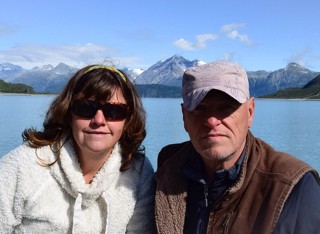
Who: Dave & Marie Ungless
Port: Poole UK
Where are we now?
Sänna blogs. Full list....
You can view the main Sänna website at http://www.sanna-uk.com. Dave's personal freelance writing site can be viewed at http://www.davidungless.com.

